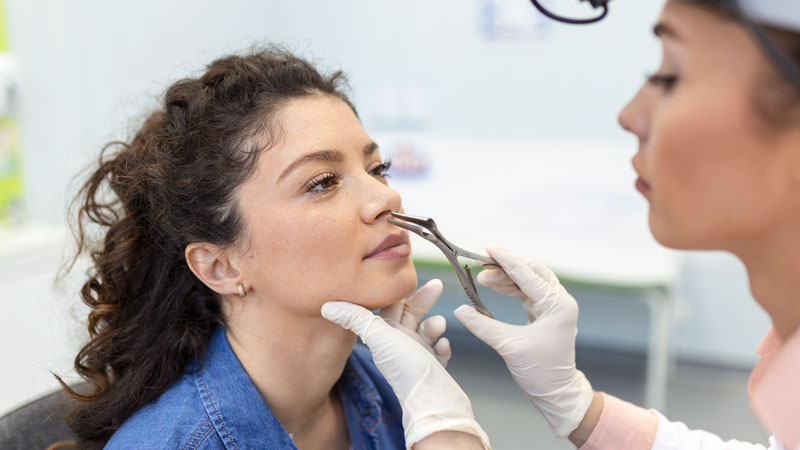What is Endoscopic Sinus Surgery?
Endoscopic sinus surgery (ESC) is a current technique used in the surgical treatment of sinus diseases. No external incision is made during ESC. In this way, pathologies in the sinuses are intervened with the help of some instruments placed in the nostrils and providing a detailed view of the surgical site.
Today, ESC is frequently used in the treatment of conditions such as sinus tumors, anterior skull base injuries, trauma-related eye socket injuries, cerebrospinal fluid (CSF) leaks, and visual nerve compression, especially chronic sinus inflammations. It is also applied in tear sac drainage surgeries (Dacryocystorhinostomy) and surgical treatment of pituitary gland tumors (Endoscopic hypophysectomy) due to its advantage of creating minimal surgical trauma. The narrowness of the areas where the sinuses around the nose are located and the complex anatomy makes it difficult to perform this operation.
At the same time, important organ neighborhoods such as the brain, eyes, visual nerves, tear ducts, and jugular veins necessitate high technical skills with low error margins as well as education and experience in endoscopic sinus surgeries.
After Endoscopic Sinus Surgery
You will not feel any serious obstruction or pain complaints after surgery. Simple painkillers are usually sufficient for these. Patients are recommended to stay in the hospital on the day of surgery. However, depending on the content of the surgery, discharge on the same day is also possible. Antibiotic treatment is given at least 10 days after surgery. If necessary, this period is extended or additional drugs can be given.
After surgery, you need to use sprays that mechanically clean the nose and moisturize the mucosa, usually containing sterile saline. You should continue to use these sprays until the crusts pass. In allergic and polyp patients, cortisone-containing sprays are started after surgery. However, drugs that reduce the risk of polyp formation are started. After the operation, dressing is performed 3-4 times.
At the end of the first week, the crusts formed in the drainage channels of the nose and sinus during the first detailed dressing are cleaned. At the same time, if anti-adhesion materials are placed in the sinus, they are removed. Then infection control is carried out. It is very important that the first dressing is carried out as needed. Depending on the size of the surgery, your doctor may call you for check-ups at intervals of 7-10 days until the recovery is complete.
Op. Dr. Tayfun Demirel, with his experience of more than 15 years, successfully performs endoscopic sinus surgery operations with a minimum margin of error and high techniques. To get more detailed information about the operation processes, fill out the contact form and you can contact Dr. Tayfun Demirel.




